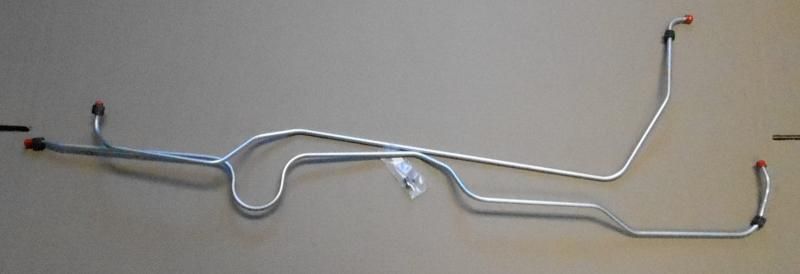TrailBeast
AKA Mopars4us on Youtube
I, like Inertia, used factory bent steel lines. Only I used std. steel lines, not stainless. Had to do some minor re-bending but it wasn't much. The only hard part was fishing them through between the Hooker headers and Kevco oil pan and even that wasn't bad. Just a little tight in that area. Been in there for 6 yrs. and 12,000+ miles without 1 single issue of a leak, but I did support them correctly, not just let them hang and vibrate like some guys do. I was a forklift mechanic for about 15 yrs. so I've had my share of dealing with hose and hardline on them and find it hard to believe it would be any harder to install factory bent lines (as long as their bent correctly), and they were quite a bit cheaper when I did mine. Not sure on prices now. You'd have to check.
Been a while since I checked so I might be mistaken but I think the brass adapter on the trans is a dash 5, or as 273 put it a 5/16". If your changing to all AN fittings I'd check into changing that fitting to a dash 6 (3/8") since the fittings are more common.
Something else to take into consideration is the stock adapter fitting coming out of the trans. is a 1/8" pipe fitting meaning the internal hole is only 1/8" so you could even drop down to a 5AN hose and fittings and it'd still flow the same amount. But AN5 stuff is rarer so it might be more expensive. Just have to check.
All makes sense to me, and I was thinking about that 1/8 flow restriction as well.
I'd also like to mention that the metal cooler lines may help loose heat, where-as rubber hoses may tend to hold heat.. Just a consideration..
This company supplies all tubes, lines, and carries a bunch of A-Body brake stuff.. I'm not really sure, I just checked the catalog "original material" lines are $50, and the stainless lines were about $80 .. They carry everything, including clips etc..
http://www.canlinetube.ca/
Steel would disperse the heat better.

















